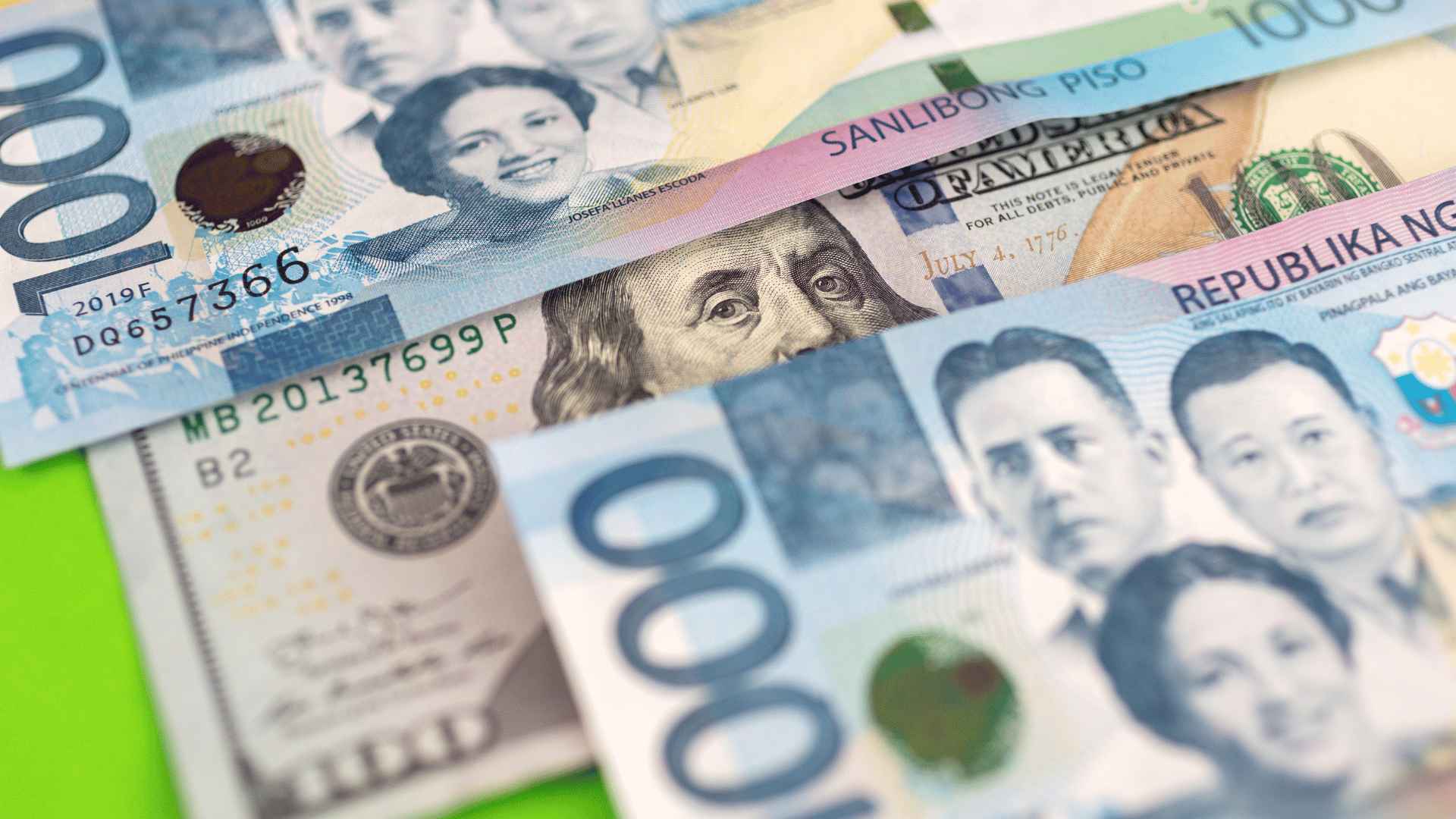Did the Philippine Peso drop or the US dollar rise?
The Philippine Peso weakens vs dollar continuously. In fact last September 21, 2022, the Philippine peso reached a new low of P58 against the US dollar. The peso depreciated against Tuesday's record close of P57.40, opened lower at P57.70, fluctuated between P57.70 and P57.91, and closed close to its lowest intraday rate.
The volume on Wednesday reached $1.0515 billion, surpassing the $967 million threshold from the previous session.. Since higher rates were favoring the US dollar, exchange rate pressures have been stronger. Since closing at P50.99 at the end of 2021, the peso has lost P7, or 13.74 percent of its worth.
Spot market volatility is a result of the market's assumption that the Bangko Sentral ng Pilipinas (BSP) will tighten the benchmark rate even more during the final three Monetary Board policy meetings of this year.
When asked about his evaluations of the local currency's performance against regional peers since the beginning of the year, Abiad responded, "It's actually pretty much near to the average for the region.
He also added that the depreciation of the Philippine peso does not portray weakness to the peso but rather strength in the dollar, which is driven by the US Fed's tightening.
In an article of Inquirer, Habito explained that terms such as “weakening peso” or “peso drop” could send a bad message, which might also account for why some Filipinos would be worried about the present exchange rates between the Philippine peso and the US dollar.
In his explanation, he continues to say that it is better to use neutral terms like appreciate and depreciate to avoid negative implication that the current exchange rate is either positive or negative.
So what does Peso Appreciation and Depreciation mean?
In simpler words, foreigners can save money on domestic products and services when the peso depreciates. When the peso appreciates in value, local products and services become more expensive for Filipinos while international or imported items become more affordable.
Effects of Peso Appreciation to Filipinos
If you were to ask “What is the effect of peso appreciation in Overseas Filipino workers?”, you should know that when the Philippine peso appreciates, recipients of OFW remittances receive less pesos for every dollar sent. However, due of lower inflation brought on by lower import costs, their pesos can also be used to purchase more locally produced goods.
That’s why with the current peso depreciation, more pesos must be exchanged for every dollar generated. Because of this, people who depend on remittances from abroad—such as OFWs who earn money in foreign currencies—benefit when the peso declines because they receive more pesos for every dollar transferred to them.
Effects of Peso Depreciation to Filipinos
A peso depreciation discourages consumers from buying imports. However, purchases of necessary goods would still be made, although at higher peso prices. For instance, even if the price of the dollar stayed the same, it would cost more pesos to import the crude oil we need for consumption in the nation.
Philippine resources and goods are more affordable to foreigners. Anything we sell to foreigners will be less expensive for them, whether it be an item made here or a resource like labor, land rent, or capital services. However, the amount paid to the Filipino seller of the product is higher per dollar of sales.
Depreciation of the peso decreases the price of our exports and encourages foreign companies to acquire our products, yet our exporter earns more pesos from sales as a result.
OFW money transfers. A Filipino worker working overseas can send more pesos to his family for every dollar sent. In other words, for every dollar contributed, the family gets extra pesos. In general, this helps the recipient's situation with regard to peso income.
Price increases at home are expected to follow. However, domestic inflation is a likely result of an appreciation in the exchange rate. This is a result of the possibility that local prices for goods—both those made locally and those imported—would increase. However, a mix of tax, spending, and other sector economic policies may be able to offset or lessen the price impact of the peso depreciation.
Effects of Peso Depreciation to the PH Government
Although it has previously been stated that the government may need to make higher payments on its foreign debt as a result of the depreciation, Habito explained on Inquirer that, on the contrary, the government benefits from the falling peso because "its higher foreign debt payments are more than offset by higher Customs collections with the bigger peso value of imports."
He explained that even while the value of the peso will need to climb in order to pay off the nation's foreign debt, the amount of customs charges and other import taxes collected will also rise. In other words, the impact of the peso depreciation increased government revenue, which balances out the increased debt service.
The planned P5.268 trillion national budget for 2023, according to Finance Secretary Benjamin Diokno, might profit from the peso's ongoing weakening against the US dollar, he said at a Senate Finance Committee hearing on September 14.
Without implying that I support the depreciation, Diokno stated, "On the exchange rate, the impact of the depreciation actually is advantageous to the budget because a P1 devaluation would mean higher revenue for the government."
Specifically on the debt servicing side, he noted, "it will need, for example, P10 billion higher revenues with little adjustment on the disbursement side, because we cannot spend when Congress has not allowed."
The budget deficit will be reduced by P7.6 billion as a result of a P1 depreciation, the finance secretary continued.
The national government's outstanding debt reached a new high of P12.89 trillion in July, according to the most recent data from the Bureau of Treasury (BTr), as a result of increased local and overseas borrowings that were made more difficult by a depreciating peso.
Domestic debts totaled P8.83 trillion and made up the majority of the total debt, or 68.5 percent. The stock of domestic debt increased by P740 million due to the peso's depreciation.
On the other hand, external debt was P4.06 trillion, including the P25.77 billion that the depreciation of the peso brought to foreign debt. Net borrowings from foreign creditors totaled P6 billion, including low-interest loans from multilateral lenders and bilateral development partners.










